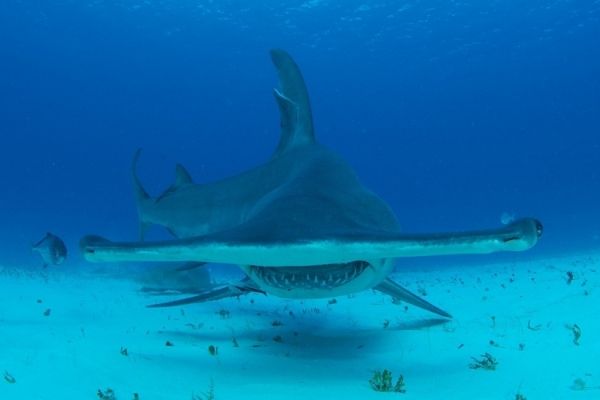It’s “hammerhead” time according aerial drone footage of blacktip sharks fleeing to shallow waters when confronted by a huge predator along the coast of southeast Florida. Footage from the drone provides the first evidence of adult blacktip sharks (Carcharhinus limbatus) using shallow waters as a refuge from the great hammerhead shark, (Sphyrna mokarran)– proving you “can’t touch this.”
Several juvenile shark species use shallow water nursery sites where the young can grow with a reduced risk of predation. However, prior to a study by Florida Atlantic University, no documentation was available to show that large adult sharks also swim in shallower waters to avoid predation.
The use of unmanned aerial vehicles (UAVs) enabled FAU scientists to unobtrusively observe and allow natural behaviors to be documented in the wild, providing insight into seldom-seen predator–prey interactions. Results of the study are published in the Journal Fish Biology .
The blacktip shark is both an agile predator of teleost fishes, cephalopods and crustaceans and a prey for larger sharks, such as the great hammerhead, which can get as big as 18 feet long. Despite their large size, hammerheads are often found in relatively shallow waters that are likely an important area for their feeding. Their prey typically includes stingrays, bony fishes and other sharks, so it is no surprise that they have been spotted in and around the blacktip shark aggregations, which provide an abundance of possible prey.
Read more at Florida Atlantic University
Image: The hammerhead sharks in the videos were at least twice the size of the blacktip sharks making them about 12 feet long. They can get as big as 18 feet long. Despite their large size, they are often found in relatively shallow waters that are likely an important area for their feeding (Photo credit: Stephen Kajiura, Ph.D.).


